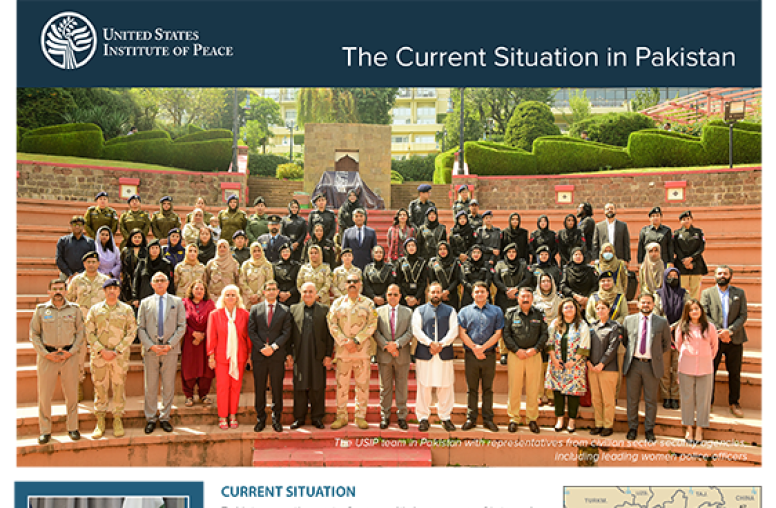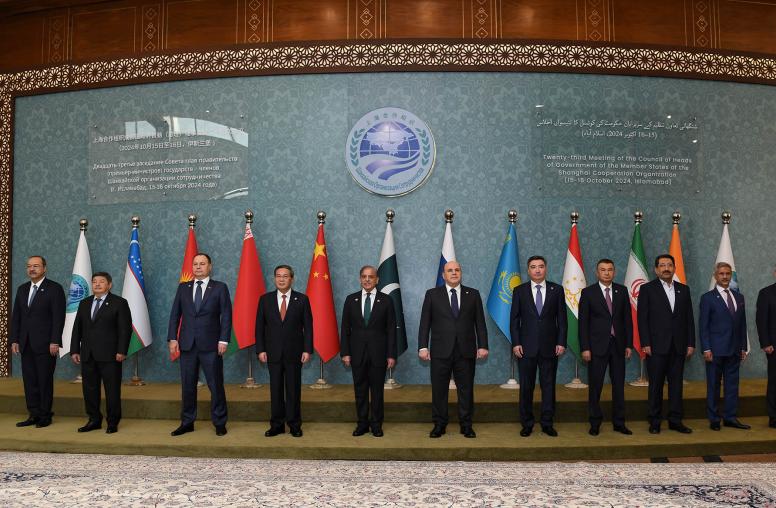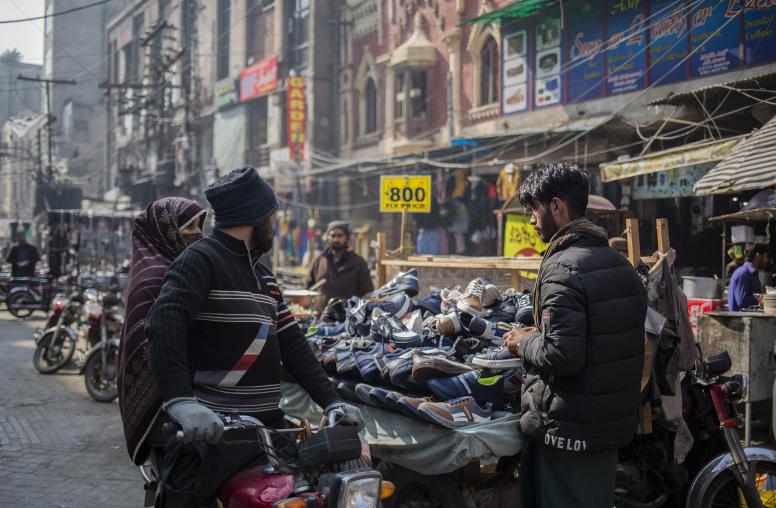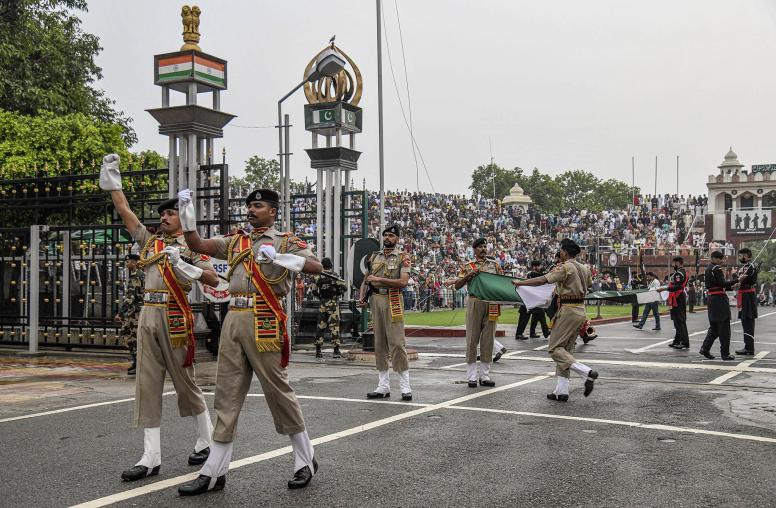Pakistan’s Climate Challenges Pose a National Security Emergency
A whole-of-government approach is needed now before climate change exacerbates conflict in the country.
Pakistan is in the midst of a terrible heatwave, with the temperatures in parts of the country exceeding 120 F. April was the hottest month in the past 61 years, until May came along and saw warmer temperatures. At least 65 people have reportedly died due to the heatwave, but the actual numbers are certainly higher, and it’s caused massive flooding and infrastructure damage in Gilgit-Baltistan, water shortages in Karachi and broader Sindh province, and placed greater demands on the country’s weak electrical grid. Despite monsoon rains beginning in late June — causing at least 77 deaths — many parts of the country still swelter. Pakistan should treat these climate disasters as a full-fledged national security emergency before they stoke conflict that adds further stress amid the country’s other numerous challenges.
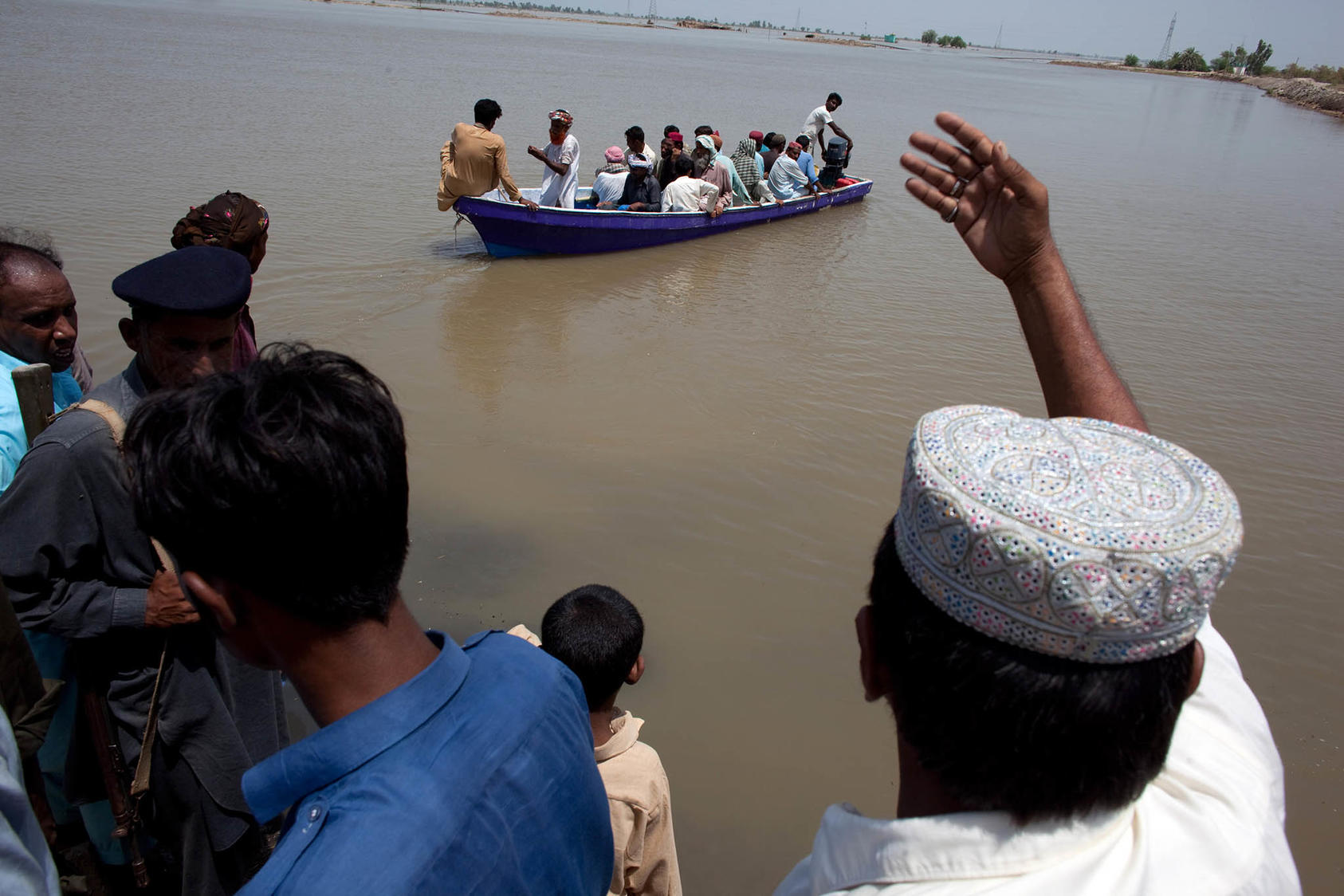
Climate Challenges Could Stoke Conflict
For the past 20 years, Pakistan has consistently ranked among the top 10 most vulnerable countries on the Climate Risk Index, with 10,000 fatalities due to climate-related disasters and financial losses amounting to about $4 billion from 173 extreme weather events. These challenges threaten to spark climate-related conflict over resources — such as water — that have become scarce due to climate change impacts. Climate-related disasters like floods, heatwaves or tsunamis can also exacerbate tensions among groups who already have a history of conflict. Any of these scenarios would be a serious threat to Pakistan and have serious ramifications for any government in the immediate aftermath of a climate disaster or as part of efforts to mitigate future disasters.
This year’s heatwave further exacerbated food insecurity, which can undermine peace and stability, according to the United Nations. Scorching temperatures have damaged entire orchards and hurt wheat production across Pakistan, adversely impacting the livelihoods of many small farmers and rendering formerly arable land unusable for agriculture in some parts of the country. Already facing wheat shortages due to Russia’s war in Ukraine, Pakistan’s domestic wheat production this year will be reduced by 10%.
During Foreign Minister Bilawal Bhutto Zardari’s visit to the United States to attend a United Nations meeting on food security, he highlighted that the country is under threat of food, water and energy insecurity. Unfortunately, it is not just a threat anymore but a reality for Pakistan. Combined with soaring inflation and the country’s continued political instability, this is a recipe for disaster. All these trends are potential catalysts that could trigger climate-induced migration from rural areas to urban centers as Pakistanis seek employment and stable living conditions. This puts an additional strain on massive cities and urban infrastructure that already cannot manage their current population levels.
A Mixed Response
Pakistan’s Supreme Court has also taken notice of Pakistan’s climate change vulnerabilities. In a recent decision, the court noted that that in urban areas in particular, relevant government authorities should take into consideration “adaptation, climate resiliency and sustainability…[as] they are essential to actualize the fundamental rights of the people.”
While some subnational government agencies have been more effective in preparing for climate-related disasters, other have not. In Gilgit Baltistan, the heatwave caused a massive glacial flood, but thanks to continuous monitoring by the relevant local government authorities, people living in vulnerable locations were relocated to safer places before the floods. After the 2020 floods in Karachi, the provincial government decided to address the causes that lead to the severe flooding after the waters subsided. However, their heavy-handed actions — such as tearing down settlements along the nalas, or waterways, that should have drained the flood waters without considering proper plans to resettle or adequately compensate those displaced from the settlements — led to a number of protests from both communities and civil society activists.
It took this heatwave for the Sindh government to notice and take action against the water mafias controlling the city, even though this has been a problem for a decade or more. The water issue connects to the larger issue of natural resource usage and extraction throughout Pakistan, in particular the availability of water, whether it is for agricultural purposes or for consumption. The current heatwave has created an acute water crisis in Sindh, leading to inter-provincial tensions with Punjab — and it’s unclear if there is a resolution in sight.
Pakistan has tried to play a significant role on the international stage, participating in COP26 and signing the global methane pledge. The country is one of the world’s major methane emitters, predominately through its agricultural sector. How this commitment will impact this sector more broadly remains to be seen, especially as Pakistan seeks international financing to meet this commitment. While climate-smart agricultural practices generally save money in the long run, it is important to understand how these changes would impact large-scale farmers and their workers, the latter of whom are one of the most economically disadvantaged groups in country.
The previous Pakistan Tehreek-e-Insaf (PTI) government had a strong advocate in Malik Amin Aslam, who served as the special advisor to the prime minster on climate change. The PTI government made significant strides in their efforts to mitigate and adapt to the effects of climate change such as committing to having 60% of energy coming from “clean” sources and to having electric vehicles making up 30% of the market by 2030.
The current coalition government, led by the Pakistan Muslim League-Nawaz (PML-N), has smartly continued the trend of strong leadership on climate change by appointing Senator Sherry Rehman, a member of the Pakistan Peoples Party, as minster for climate change. While leadership on this issue is imperative, it is equally important that there is a tangible and sustained collaboration and coordination between the national and provincial governments to develop a roadmap to address the impacts of climate change on the country. Because of devolution in Pakistan, issues like water, food and agriculture, and environment are ones where the provinces have the authority to pass governing legislation, while climate change is a federal issue. This disconnect must be resolved through a more robust system for interprovincial coordination.
What Pakistan Needs
The PML-N government’s announcement to set up a climate change task force in response to the heatwave is a step in the right direction. But if Pakistan is serious about tackling climate change and investing in mitigation and adaption efforts, what is needed is an overarching framework to coordinate this response. One recent model to look to is Pakistan’s National Command and Operation Center (NCOC), which led the country’s COVID-19 response. A climate-focused NCOC would ensure that sufficient resources are allocated to address the impacts of climate change on the country and appropriate coordination takes place that builds political consensus. This would require relevant provincial and national bodies to come together to work develop a common action plan to address the internal impacts of climate change. Furthermore, the NCOC would spearhead the implementation of Pakistan’s National Determined Contributions under the Paris Accords because some of these efforts would need provincial buy-in.
It is unclear if Pakistan’s new climate change task force will carry the same weight as the COVID-19 NCOC. But if it is to succeed, then learning from the successes and failures of the NCOC model is imperative. The COVID-19 NCOC took a whole-of-government approach to tackle the crisis head on. In the beginning there was significant tension between the federal and provincial governments on measures such as the timing and scope of lockdowns and whether provinces had the legal mandate to dictate how businesses functioned during the pandemic. However, in the interest of combatting the pandemic, a delicate understanding between and cooperation among political parties in power in different provinces did eventually occur.
National and provincial governments are working in lockstep right when it comes to energy conservation. But this cooperation will need to be sustained over the long haul. Unlike COVID-19 where we have vaccines and other mitigation tools, climate change is a significantly more complex challenge that will require long-term coordination and commitment. Almost PKR 10 billion (approximately $50 million) has been allocated to the Ministry of Climate Change under the 2022-23 national budget, a decrease from the PKR 14 billion in the 2021-22 national budget. This change is likely due to the economic situation in the country, but still shows a commitment to the issue and continuity between governments as the PTI government’s signature “10 Billion Tree Tsunami” project received an earmark.
Alongside these domestic efforts, both the United States and Pakistan should hold a second meeting of the U.S.-Pakistan Climate and Environment Working Group, following the first meeting held in September 2021. This working group could serve as the springboard to begin repairing and resetting the tenuous U.S.-Pakistan relationship as addressing climate change and promoting regional stability is in the interest of both nations.
All mainstream political parties agree that climate change is threat to Pakistan’s social and economic stability. Addressing climate change in Pakistan truly requires a “war-footing” and a whole-of-government approach. Otherwise, the consequences of inaction or improper action could foster greater turmoil and strife for all levels of Pakistani society.
